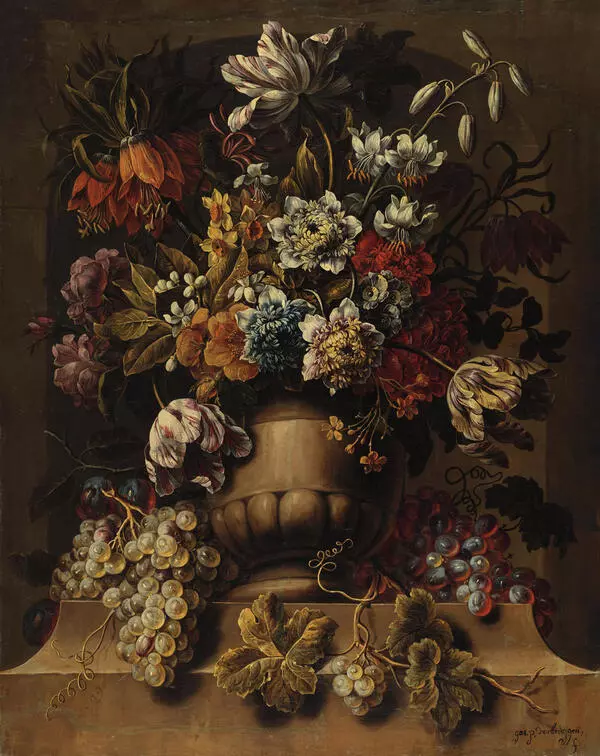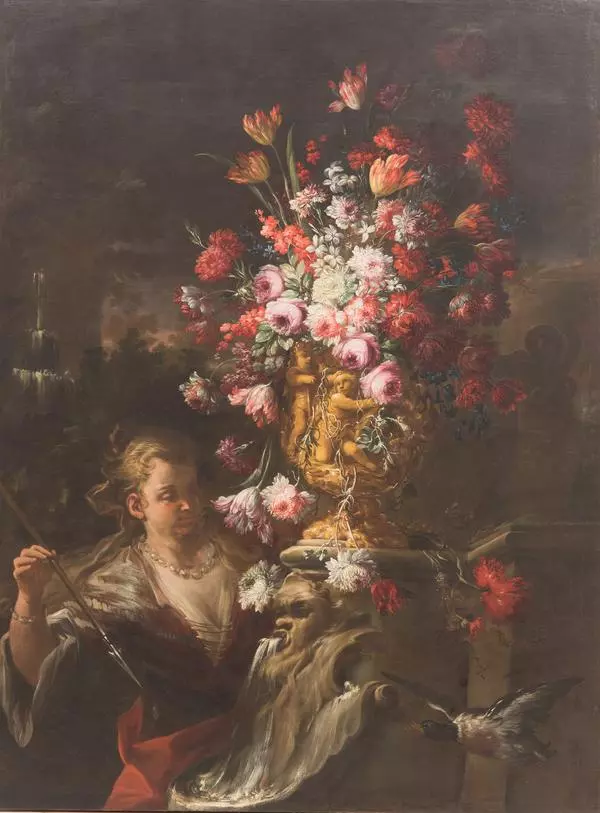Gaspar Peeter Verbruggen painted his Flora in 1695. That time period is considered to be the peak of the creative career of the Flemish artist. He became a well-known painter fairly early: when he was only 13, he opened his studio and started recruiting apprentices.
#3
Gaspar Peeter Verbruggen
Flora
#2
#4
The artist learned painting from his father: Gaspar Verbruggen the Elder (1635 — 1681). He was a master of floral still-life. Verbruggen the Younger worked in the same genre. He created a lot of paintings on the floral subject: flower garlands, vases with sumptuous bouquets. Unlike his father, in his paintings he often used staffage: female figures wearing flower necklaces.
#5
In the picture that is now in the Radishchev Museum, Verbruggen painted Flora, the goddess of spring. To her right, there is Cupid, the god of love. They are surrounded by traditional paraphernalia: flower garlands, plants and various fruits. Verbruggen painted buds in blossom. He succeeded in representing various forms and color shades of flowers, each petal being painted in minute detail. He used bright colors: red, orange, blue, green. Each plant has its symbolic meaning, that depends on the color used by the painter. For instance, the pink rose symbolizes tenderness and the white one, innocence.
#6
The Flora is a typical specimen of Baroque fine arts. This is a style of arts that stipulated abundant decoration, sometimes even excessive one.
#7
The Flora is a typical specimen of Baroque fine arts. This is a style of arts that stipulated abundant decoration, sometimes even excessive one.
#8
More often than not, it is difficult to establish the authorship of Verbruggen’s paintings. The painter signed not all of his works, but only those he considered successful. He left his name and date on the Flora.
#9
Another feature of Verbruggen’s creative work is collaboration. He often involved other artists to paint some parts of his works. Such practice was popular in the 17th century. He painted his Flora in collaboration with Peter Ykens, an artist who worked in the genre of history and religious painting. Scientists believe that Ykens painted the figures of Flora and Cupid.
Such paintings were used for interior decoration. A picture of the goddess Flora was indicative of the owner’s well-being. Earlier, the painting used to be part of the private collection of the Volkovs-Muromtsevs family estate Khmelita. After the revolution, the painting came into the National Museum Fund, and in 1922, it was transferred to the Radishchev Museum.
#10
A.N. Radishchev Saratov State Museum of Fine Arts
читать дальшескрыть
00:00
00:00
1x
Flora
Время создания
1695
Размер
154x227 cm
Техника
Oil on canvas
Коллекция
2
Открыть в приложении
Поделиться






